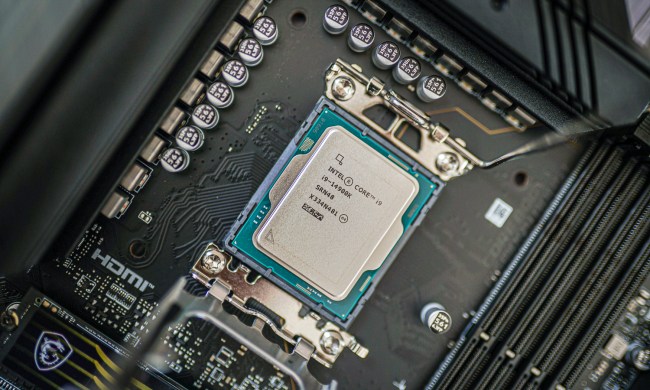Intel Alder Lake’s non-K series processors are typically not the best for overclocking. These CPUs are locked, which means that users who like to overclock normally gravitate toward K-series processors, such as the high-end Intel Core i9-12900K.
Against all odds, Der8auer managed to overclock two midrange non-K Intel Alder Lake processors, bringing them up to over 5GHz clock speeds.
Der8auer detailed the process in a video on his YouTube channel and talked about the processors in question. The two CPUs he overclocked and then benchmarked are the Core i5-12400 and Core i5-12600, both part of the midrange Alder Lake lineup. Both of these are locked CPUs, so while overclocking is not impossible, it’s not as straightforward as it is on a K-series processor.
The ability to overlock a non-K 12th-generation Intel CPU depends on several factors, such as the model of the motherboard — not all boards allow the kind of overclocking Der8auer used. The CPU is also going to consume more power when overclocked, and overclocking Alder Lake CPUs, in general, is trickier due to the hybrid core architecture.
The YouTuber found that the Core i5-12400 and Core i5-12600 processors can be boosted via manually altering the bus speed in the BIOS. This increases the target CPU frequency, but the option, referred to as “BCLK OC,” is not available on all motherboards.

The video also shows the entire overclocking process, and it seems surprisingly simple for a locked CPU. On available motherboards, users simply have to unlock the BCLK OC option in the BIOS. That’s not all there is to it, however, and if you’re interested in giving it a shot, watch the video embedded above in full.
Der8auer discovered that overclocking non-K Intel processors was possible on Asus Z690 motherboards, but a B660 motherboard didn’t have such a feature. Through his testing, the YouTuber managed to confirm that overclocking non-K CPUs is available on Asus Z690 Apex and Asus Z690 Hero boards running the 0811 version of the BIOS. He also ruled out the Asus ROG Strix Z690-I as not having BCLK overclocking available. Through his testing, he reached the conclusion that likely only high-end Z690 motherboards with an external clock generator can support BCLK overclocking.
The processors, once overclocked, will require more voltage. In Der8auer’s tests, the power consumption went up to 138W (up from a base of 65W) and some of the cores started to heat up, reaching temperatures as high as 96 degrees Celsius. However, this comes with massive performance gains, which the YouTuber tested in a Cinebench R20 multicore benchmark.

The clock speeds of both CPUs went up significantly. The Core i5-12400 has a base clock speed of 2.5GHz and goes up to 4.4GHz in Turbo mode, but when overclocked, it went as high as 5.2GHz. The processor looked promising from the get-go, offering high performance at a low power requirement, so it’s nice to see it perform even better under pressure. Surprisingly, Der8auer was unable to hit the same frequency on the slightly better Core i5-12600 — he only managed to overclock that processor to 5.1GHz.
The extra power consumption and high temperatures were not all for nothing. In the Cinebench R20 test, the Intel Core i5-12400 CPU achieved a 33% performance increase compared to its non-overclocked state, while the Core i5-12600 hit a 16% boost. In a Battlefield 2042 test, when played on 1080p on high settings, this actually put the Core i5-12400 above the Core i9-12900K, which is one of the best gaming CPUs. Of course, these results will vary based on the game.
The BCLK OC feature seems like a great way to overclock a locked Intel Alder Lake CPU, but if Der8auer’s assumptions are true, it might also be a little counterproductive. Assuming that only high-end motherboards support BCLK, users would have to spend a lot of money on an expensive board only to buy a cheaper CPU. In this situation, it might be easier to simply buy a higher-end unlocked processor. However, if cheaper motherboards were to support this feature, it would open up overclocking and high performance to users on a tighter budget.


